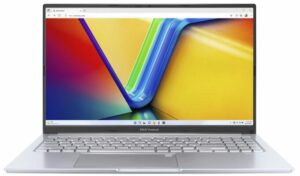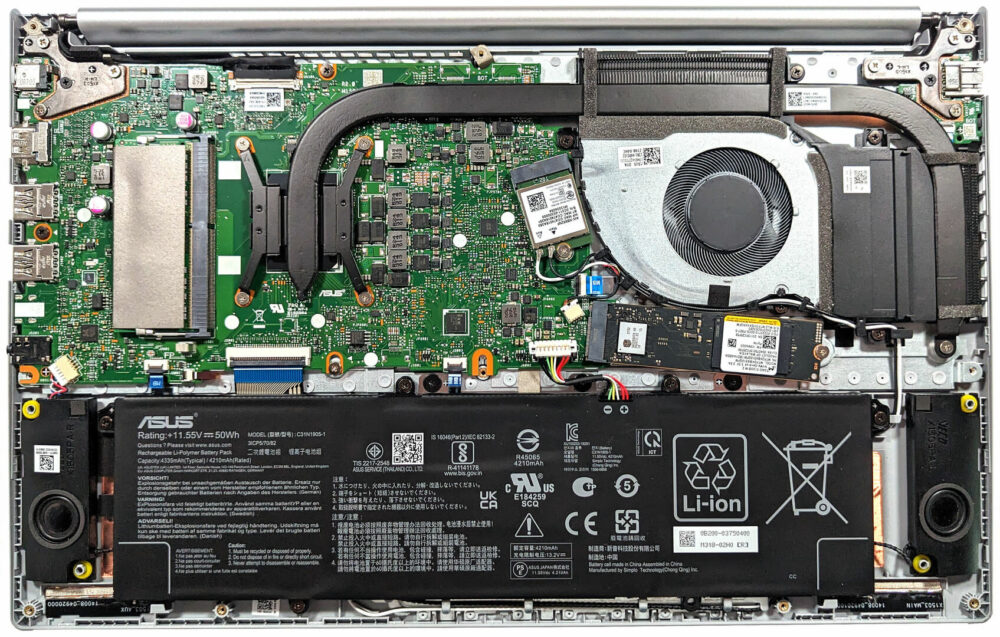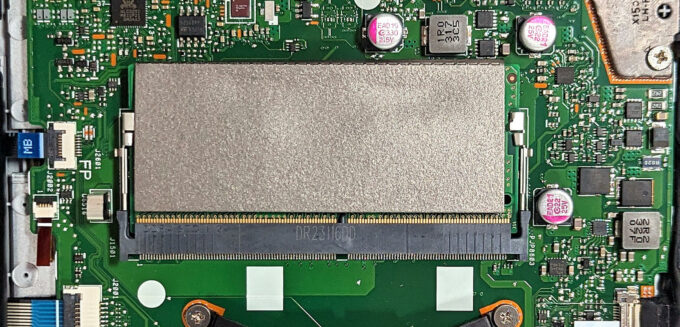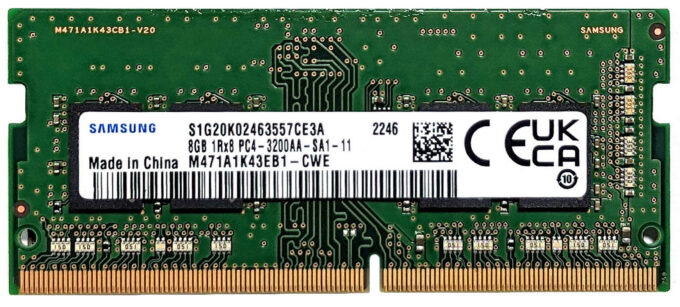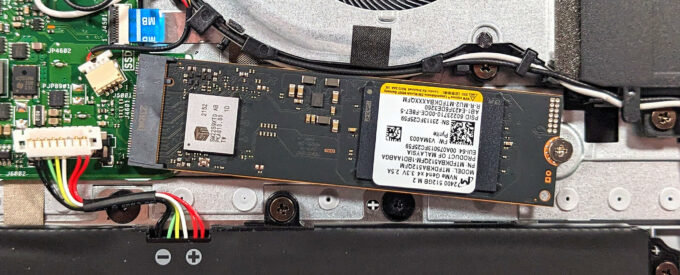How to open ASUS Vivobook 15 OLED (M1505) – disassembly and upgrade options
Step 1: Accessing the Internal Components
- Ensure the ASUS Vivobook 15 OLED (M1505) is powered off and placed on a soft, clean surface to prevent scratches or damage.
- Remove the 10 Phillips-head screws securing the bottom panel of the laptop.
- Create a gap by gently lifting the bottom plate near one of the top corners, then use a thin plastic tool to start popping the panel off.
Hint: Be careful not to apply too much force when prying open the plate to avoid damaging the clips or the laptop casing.
Step 2: Removing the Battery
- Disconnect the battery by unplugging its connector from the motherboard.
- Remove the 5 Phillips-head screws that secure the battery to the chassis, then lift the 50Wh battery away from the laptop.
Caution: Handle the battery and its connector with care to avoid any damage.
More info: The 50Wh battery provides up to 12 hours and 30 minutes of web browsing or video playback, offering good battery life for daily tasks and entertainment.
Memory Upgrade
- Identify the SODIMM slot alongside the soldered 8GB of DDR4 memory.
- Add an 8GB memory module to the available slot to achieve the maximum 16GB of DDR4-3200MHz RAM in dual-channel mode.
Hint: Ensure the additional memory module is compatible for optimal dual-channel performance.
You can buy DDR4 RAM modules here: Buy from Amazon.com (#CommissionsEarned)
Storage Upgrade
- Locate the single M.2 slot on the motherboard that is compatible with 2280 Gen 3 SSDs.
- Upgrade or install a new NVMe SSD as needed for increased storage capacity or faster data access speeds.
More info: While the laptop supports Gen 3 SSDs, they provide a good balance of speed and capacity for most users.
You can buy Gen 3 M.2 SSD modules here: Buy from Amazon.com (#CommissionsEarned)
Step 3: Examining the Cooling System
- Inspect the cooling system, which includes a single fan, one long heat pipe, two heat sinks, and a heat spreader, designed to efficiently manage the thermal output of an iGPU-only laptop.
More info: The cooling configuration, while basic, is adequately designed to keep the laptop cool during typical usage scenarios.
